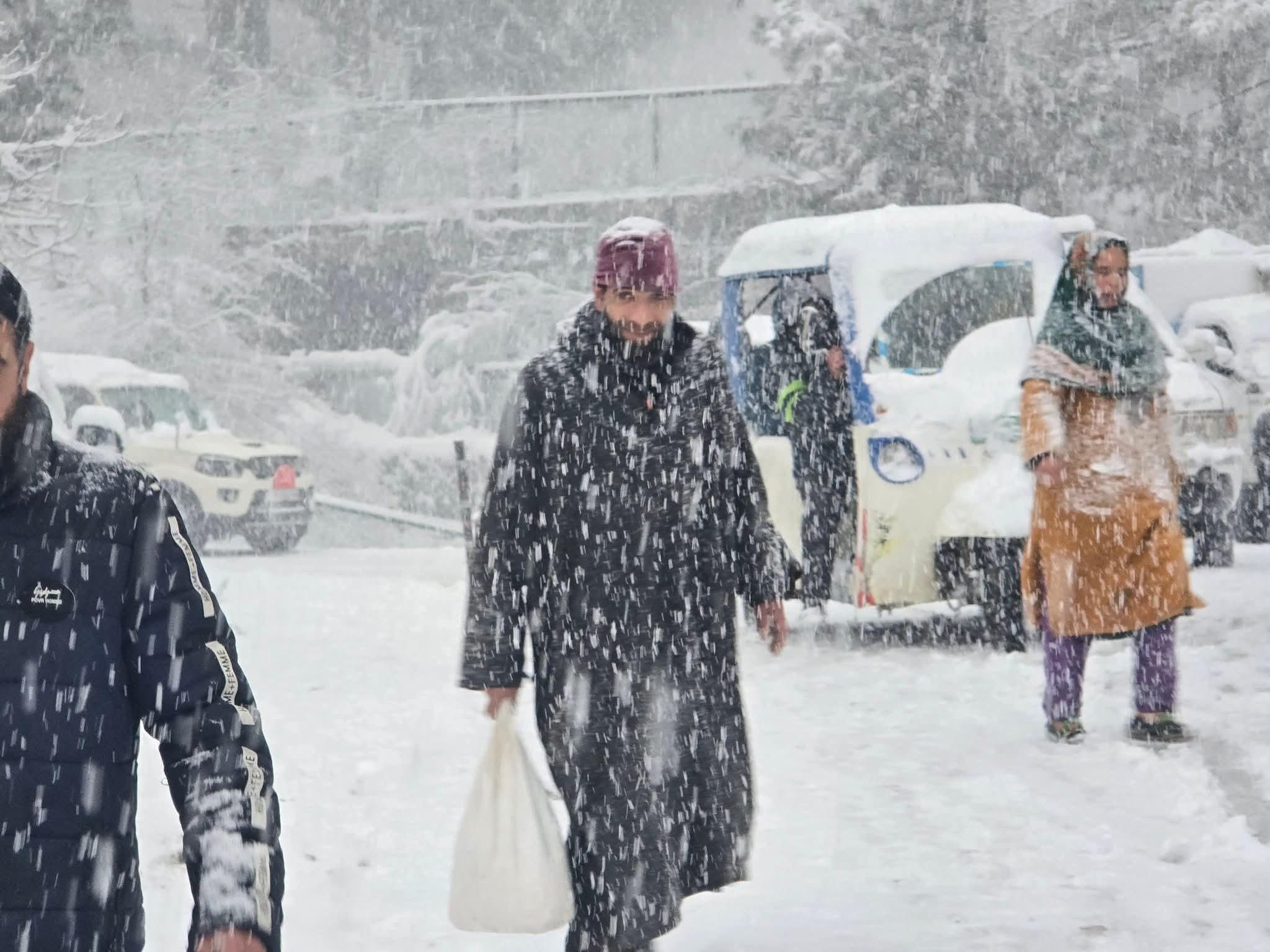Sudden Winter Transformations inNorthern India:Snowstorms, Fog, and IcyConditions

Northern India has recently witnessed a dramatic shift in weather, disrupting daily life while also providing unique opportunities. From drenching rains in the plains to heavy snowfall in the mountains,
the rapid weather changes underline the challenges posed by the region’s diverse climatic conditions.
Delhi: A Rain-Soaked Winter Intensifying the cold
The national capital experienced unexpected rain and thunderstorms, resulting in an intensified cold
wave.
Nighttime temperatures dropped to 8°C, with daytime highs struggling to reach 23°C. This chilling weather coincided with a hazardous spike in air pollution, as the Air Quality Index (AQI) spiked to 398, classified as ‘very poor.’ The combination of freezing conditions and toxic air poses significant health risks, particularly for vulnerable groups such as children, the elderly, and individuals with respiratory issues. Dense fog and slippery roads and clogged areas added to the difficulties, causing delays and highlighting the urgent
need for measures to enhance public safety and improve air quality during the winter season.
Himachal Pradesh: Snow-Covered Landscapes and Connectivity Woes
Himachal Pradesh has been blanketed by heavy snowfall, prompting the India Meteorological
Department (IMD) to issue an orange alert for December 27-28. Prior snowfalls have already blocked 157 roads, disrupting transportation and isolating many areas. Temperatures in the region range from a bonechilling -10.6°C to a milder 23.6°C, showcasing the state’s climatic extremes While the snow has enhanced the state’s natural beauty, drawing eager tourists, local residents face significant challenges in accessing essential services. Authorities are working diligently to restore road connectivity and ensure the delivery of vital supplies to affected communities. These efforts emphasize the importance of maintaining safety and providing timely aid during severe weather events.
Kashmir: Snowfall Brings Joy to Tourists and Challenges for Locals
Srinagar recently received about 3 cm of snow, transforming the city into a winter wonderland.
However, the snow has made roads slippery, leading to traffic congestion and delays. Visibility has been further hampered by thick fog, complicating travel and increasing risks for drivers.
Despite these challenges, the snowfall has delighted tourists, who feel fortunate to witness such a magical winter experience.
The influx of visitors is expected to boost Kashmir’s tourism industry, providing an economic lift to the region.
Local authorities remain vigilant, focusing on maintaining road safety and ensuring that essential services reach residents. The snowy landscapes of Kashmir continue to charm travelers while highlighting the need for robust winter preparedness.
A Brighter Outlook: Warmer Days Ahead
Meteorological forecasts suggest a gradual rise in temperatures in the coming days, offering muchneeded relief to residents.
The improved conditions are expected to ease transportation challenges and enhance accessibility to areas currently facing disruptions.
The sudden shifts in Northern India’s winter weather underscore the region’s climatic diversity and the resilience required to cope with its extremes.
While these conditions present immediate challenges, they
also create opportunities, particularly for tourism, which thrives on the allure of snow-draped landscapes and unique winter adventures. As the region continues to adapt, balancing the beauty of nature with effective disaster management remains essential.
Note :- This Article is not edited by Team The KashPost, This Article is write and edit by The Author
Article By: Ibn Qalam
About the Author: Ibn Qalam is a budding writer with a keen interest in environmental issues, science and technology, and social matters. He is a contributor to The KashPost.





